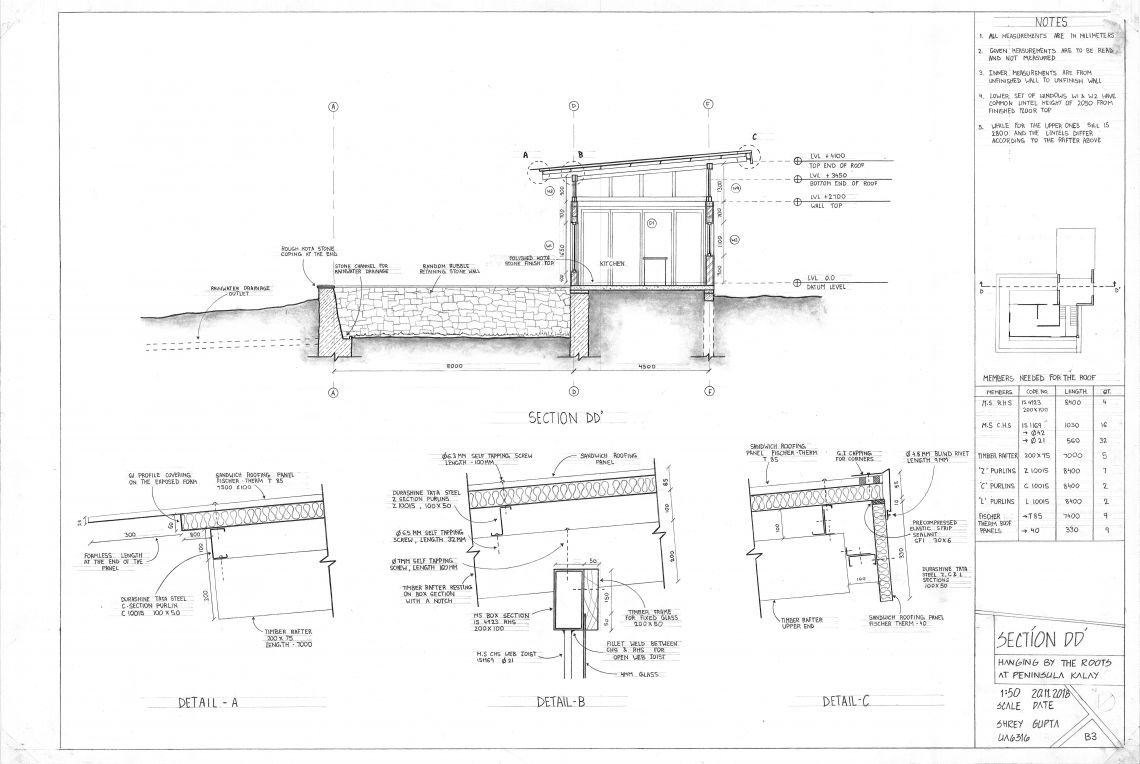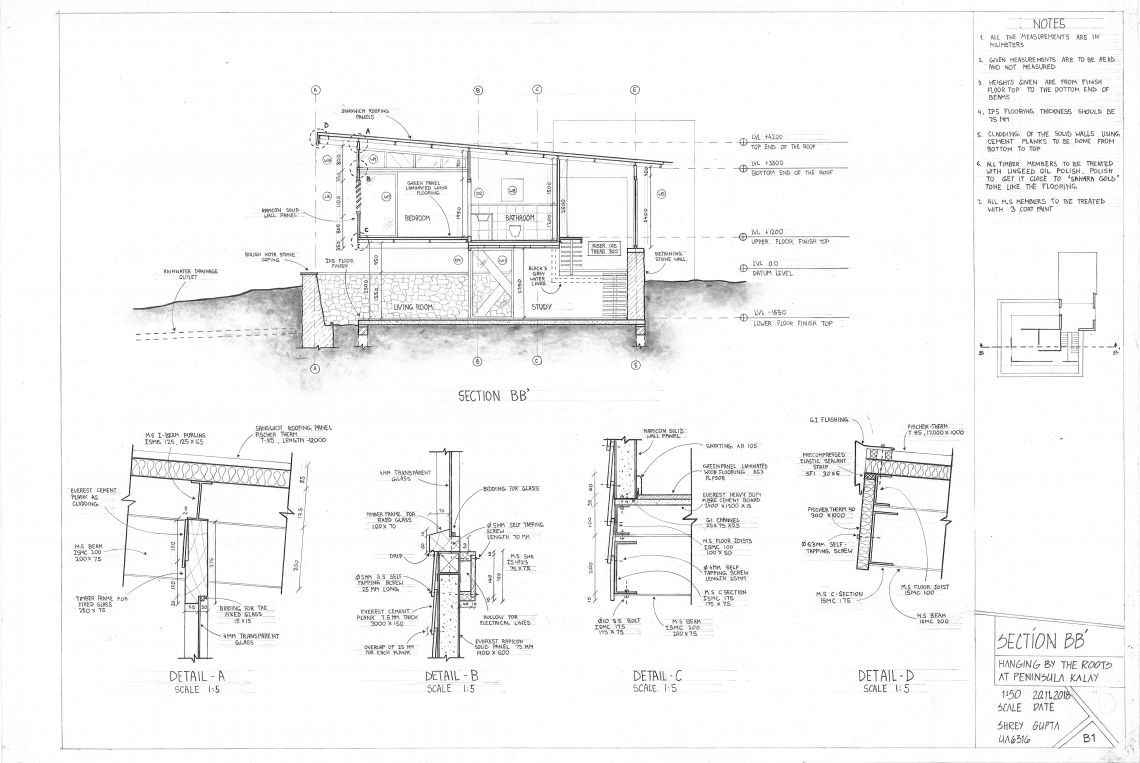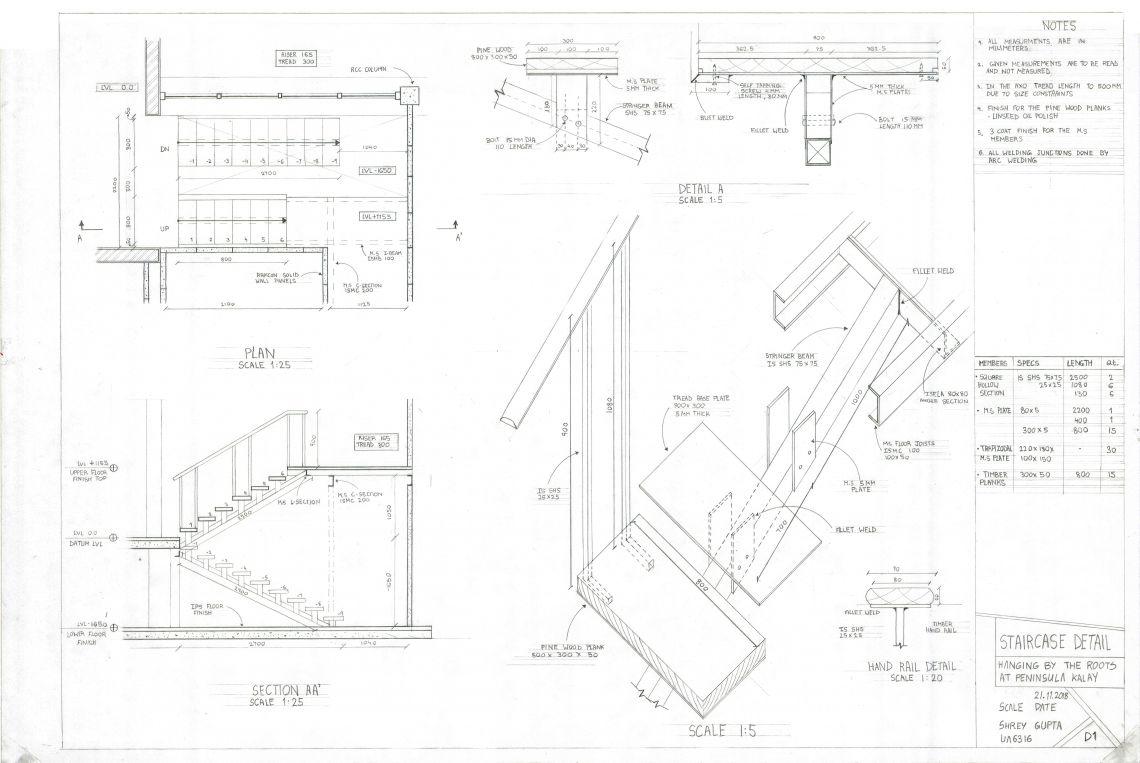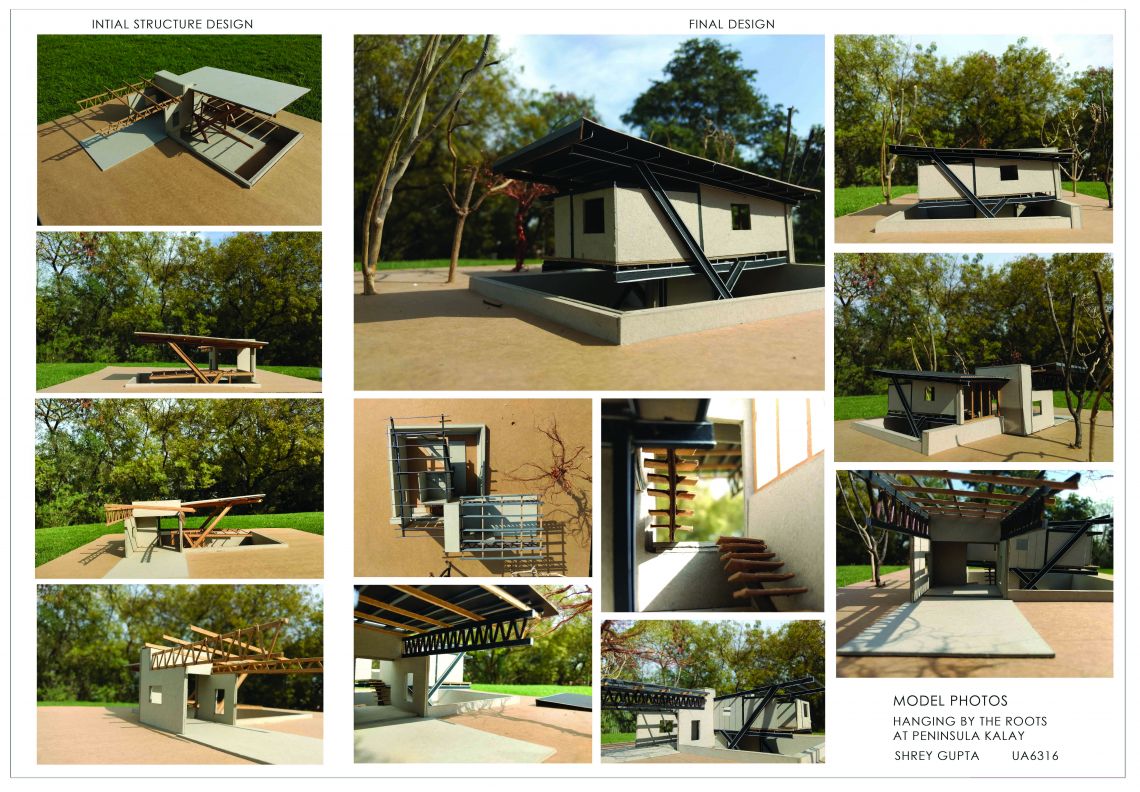Your browser is out-of-date!
For a richer surfing experience on our website, please update your browser. Update my browser now!
For a richer surfing experience on our website, please update your browser. Update my browser now!
Architecture has always been sugar coated and served to the students seeking to learn it. It felt like throughout this semester there were a series of such eye opening learning. Pointing out the major revelation that I came to realize after numerous exercises, it would be how isolated our designs are from the prevailing practices and the amount of effort that goes into actually building it.
The brief which was given to us, wasn’t very elaborate and i had a certain picture of how the spaces might be like. So my approach was to merge these vague set of spaces with the context while walking amidst the site provided. My first intuitive thoughts reflecting the brief and the context at first glance were •Inside outside flow •Many layers to the view of the coast •Opportunity to blend amidst the forest •Light weight form, sitting lightly
As our design was evolving, the exercise of Construction site analysis was introduced to us, where in we were visiting actual sites and understanding how different agencies worked in synergy. It was a important exposure to understand what actually goes into building a structure. Sub consciously these learning started to be included in our design decisions, small things like how the material would reach the site, which agencies would be working when, how much is on site and how much is not, etc.
Resolving the design after mid sem involved the adding of the infill, the walls and fenestration, after the overall steel structure was finalized and working of details of it. There were few changes in the material pallet, from concrete to brick, concrete retaining wall to stone retaining wall. Challenge faced by me was to explore this new field (comparatively in our context) of dry partition and how different elements come alongside it. Details of door window frames, electrical lines, etc. would fit into this form of dry construction or how the sunk slab would be constructed and how the tiling and fixtures will be fitted.
The 1:1 joinery exercise helped me understand the massive scale of the structural members as well as how these dry partition, flooring and steel structure come together. It also helping me understand the sequence and the amount of skilled labor required.
Facing the harsh weather of Vapi, next task at hand in detailing was to know how all the joints were sealed. It took a lot of research, understanding practical grounds of trying out this method of construction, all the while maintaining the integrity of my conceptual thinking.
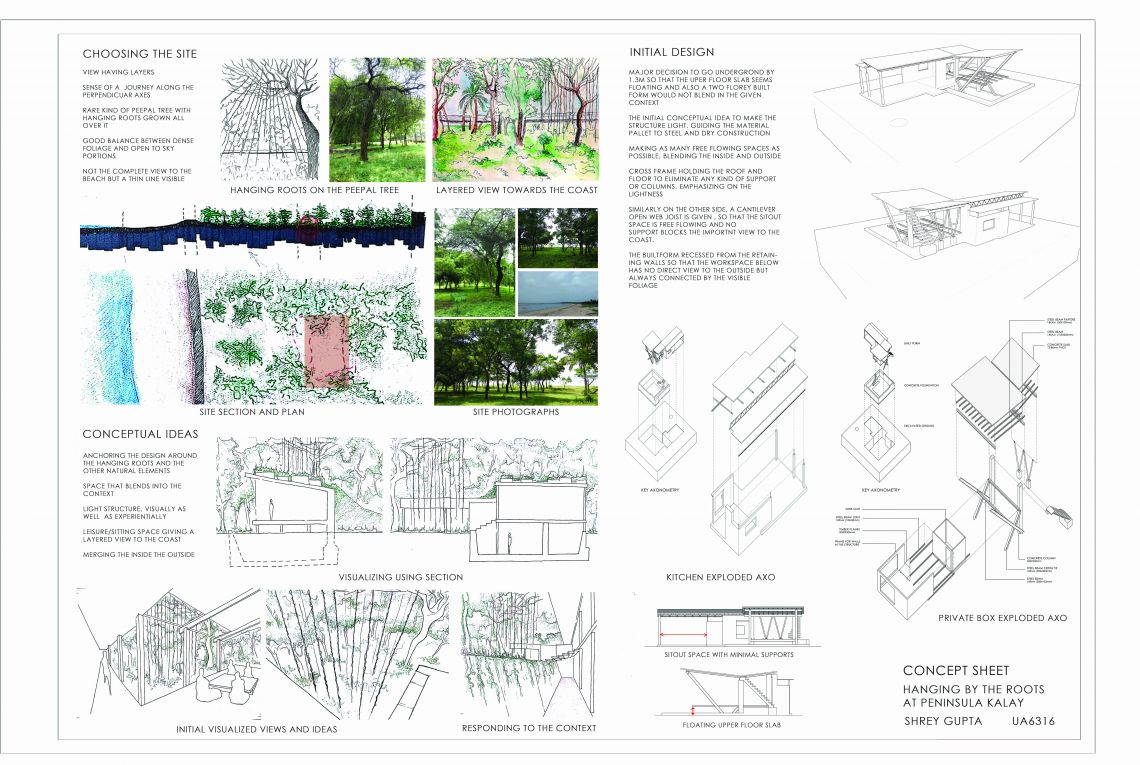
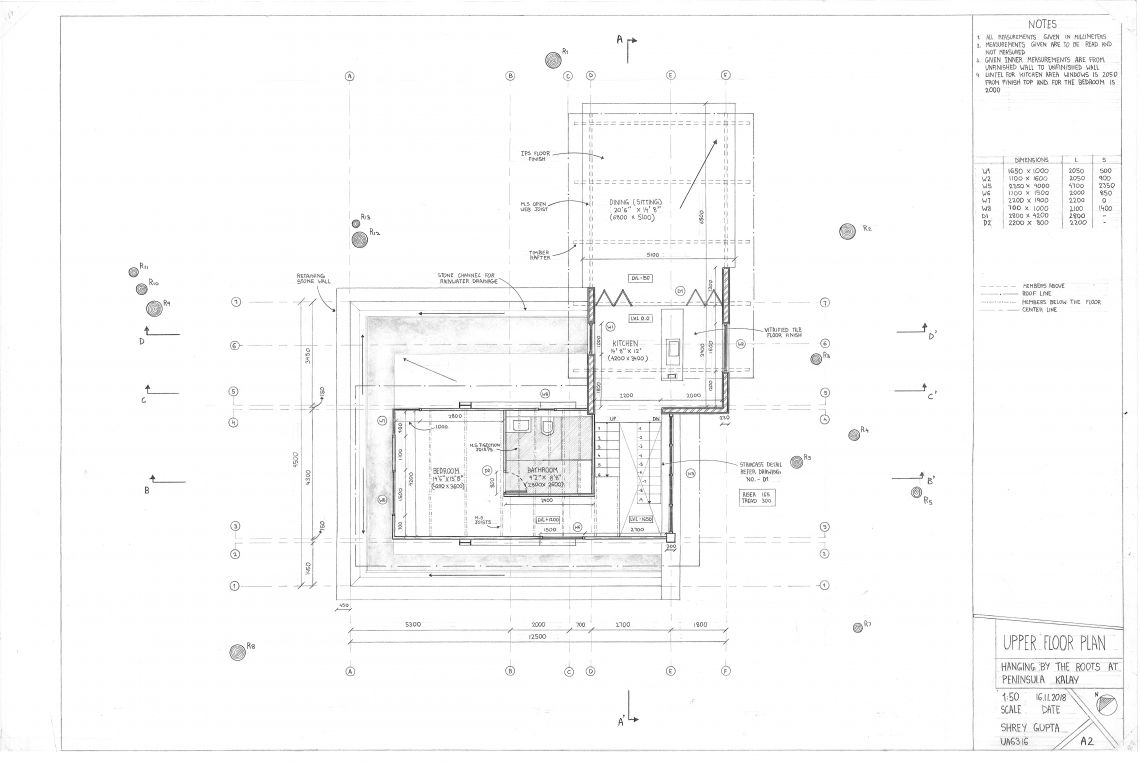
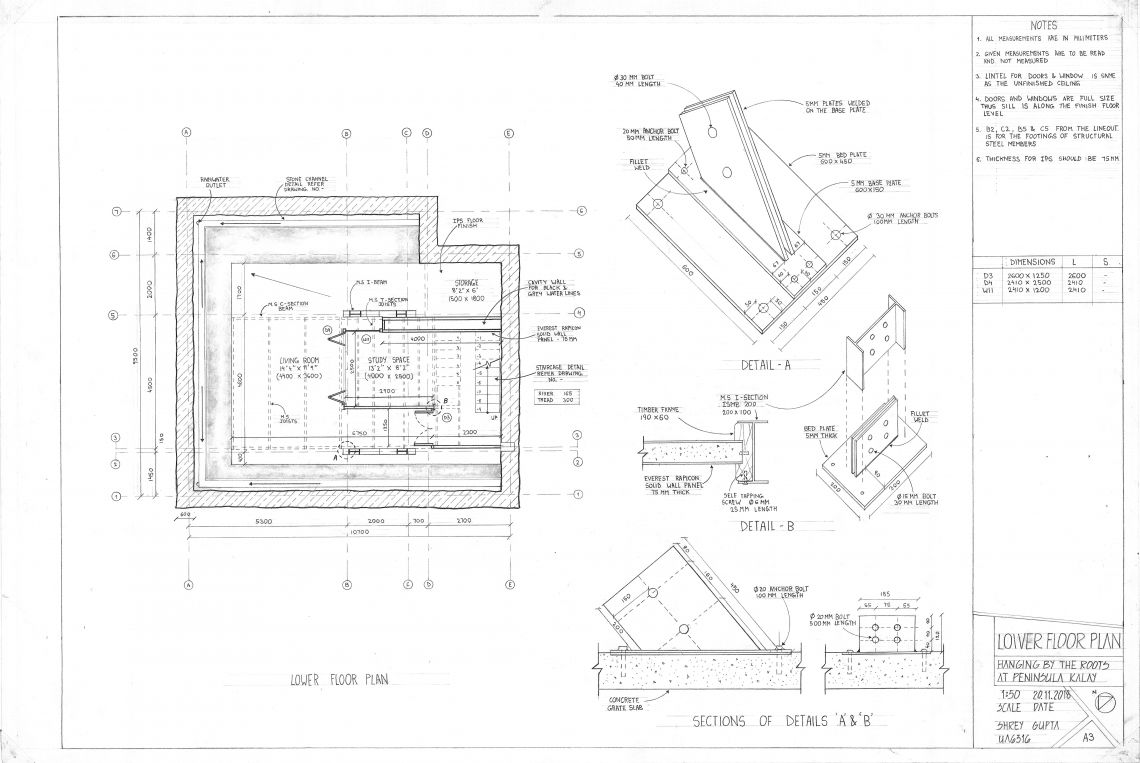
.jpg)
